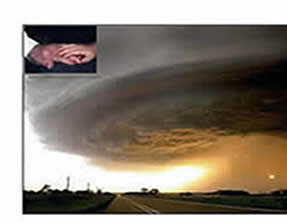General Public
How do I do the work of grief following a disaster?
After the immediate response to disasters in which we experience denial, shock, and stress, we begin the work of grief. This is the process by which we adjust to the various losses associated with disaster. Of course, grief following disasters is complicated because there are always various losses: perhaps of home, workplace, health, pets, and even loved ones. Sometimes grief is also complicated by guilt (known as survivor's guilt about being alive when someone else has died, or about failure to save the person who died or to make their life or their dying easier.
While grief is not the same for every person, there are some common features and tendencies. Here are some things to keep in mind as you begin to do the work of grief following disasters:
- Grief does require work, and is not automatic. This is why the process of grieving is sometimes known as grief work
- Grief has predictable phases but the timetable is intensely personal. For some, it's a relatively quick journey lasting a few months; for others, a journey that may take years to complete. Here is a quick guide to the phases of grief:
- Numbness: This is a common reaction and tends to last seven to ten days. A sense of being paralyzed, distant, and removed from one's feelings of grief is present. Some have referred to numbing as the body's mechanism for protecting itself from being overwhelmed by the shock of the loss. We move from this phase to the next when we can no longer be numb.
- Denial and Isolation: In this phase we have difficulty accepting the reality of loss. This may be expressed in more severe forms as a complete denial of the disaster or in less severe forms in confusion and a sense of “sleep-walking” through life. We move from this phase to the next when we start to resume some relatively normal roles and relationships, and then we experience
- Anger, which may be directed at the disaster itself, at the world, fate, God, or other people in their lives. A sense of "Why me?" and/or "Why not someone else?" give a flavor of this phase. Bargaining with God for the return of the dead person may be part of this phase, and we move from this phase to the next when we acknowledge the reality of the loss and give up the idea that we can recover through anger or some other act of our own. Then we tend to experience
- Depression, which in response to disaster may include combinations of hopelessness, helplessness, intense sadness, sleeplessness, anxiousness, physical pain, confusion, fear, anger, grief, shock, guilt, mistrust of others, and loss of confidence in self or others. As acknowledgement and acceptance of the loss and the reality of life after the loss grow, sadness and depression become more present. We move from this phase to the final stage of grief when we start to make meaning of the loss and to experience it fully, gaining some
- Acceptance, in which we come to terms with the loss, and are able to move on or re-invest in the life that lies ahead. We no longer experience extreme emotions, but have a sense of meaning and a new relationship with our loss.
Following a disaster you can ease your grief work through:
- Seeking out caring people. Find relatives and friends who can understand your feelings of loss. Join support groups with others who are experiencing similar losses.
- Expressing your feelings. Tell others how you are feeling; it will help you to work through the grieving process.
- Taking care of your health. Maintain regular contact with your family physician and be sure to eat well and get plenty of rest. You should not sleep more than 10 hours a day without your doctor’s approval. Be aware of the danger of developing a dependence on medication or alcohol to deal with your grief.
- Accepting that life is for the living. It takes effort to begin to live again in the present and not dwell on the past.
- Postponing major life changes. Try to hold off on making any major changes, such as moving, remarrying, changing jobs or having another child, as you respond to the disaster. You should give yourself time to adjust to your loss.
- Being patient. It can take months or even years to absorb a major loss and accept your changed life.
- Seeking outside help when necessary. If your grief seems like it is too much to bear, seek professional assistance to help come to terms with your loss and work through your grief. It’s a sign of strength, not weakness, to seek help.
Additional Resources
The Center for Disease Control (CDC) offers this website for emergency preparedness.
The American Red Cross offers this site to help you prepare and get trained for a disaster.
The American Red Cross offers this site to help you get assistance after a disaster.
